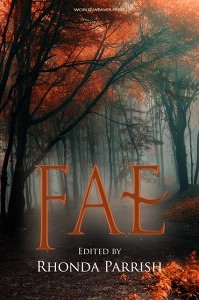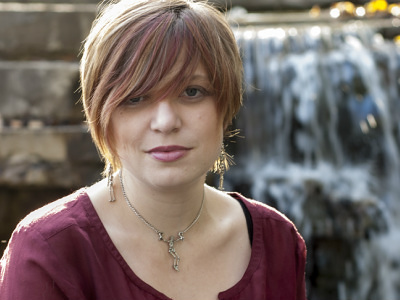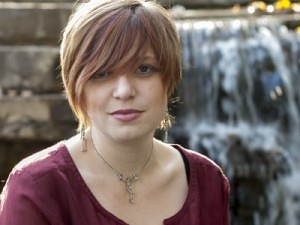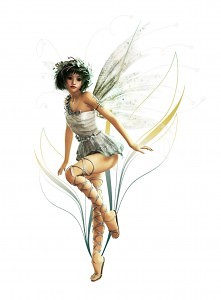This is the third installment of my series of Changeling-themed guest blogs for Fae-tastic Friday. Today’s blog is brought to us courtesy of Kari Castor. Kari looks at the possibility of a connection between changeling stories and ASD.
Changelings and ASD
by Kari Castor
If you’re familiar with fairy folklore at all, you likely know that fairies have a penchant for abducting humans and carrying them away to Fairyland. Sometimes a fairy, or some simulacrum (often made of wood), is left in place of the abducted human. These strange creatures, which take the appearance and place of the abductee, are known as changelings. Changelings are characterized by a variety of different traits – they may have physical deformities, or wither away of illness, or they may be distant and unresponsive, or agitated and difficult to calm.
I’ve always been particularly interested in the ways folklore and mythology arises from real people trying to make sense of real events or situations, and tales of changelings seem to offer many clues about the truths behind the legends.
Story after story about changelings features children who never stop crying. The original, healthy child is replaced with a clamorous, sickly creature who often doesn’t speak and will not grow (or, if it does grow, remains as helpless as an infant). It’s not hard to see why modern researchers have suggested that tales of this sort may provide us with evidence of autism spectrum disorder (ASD). Children with ASD often seem to be developing normally, and then unexpectedly withdraw from social interactions as the disorder manifests. They may not respond to their own names, have difficulties interpreting social cues, and lack empathy. They sometimes have repetitive movement patterns (rocking back and forth, for example) or harm themselves (through actions such as head-banging). Hundreds of years ago, a mother faced with a child who has suddenly begun exhibiting such upsetting behaviors might well have believed her own child had been replaced by a strange, fay creature.
Consider, too, that ASD may appear alongside a wide range of co-occurring conditions, such as epilepsy, that would certainly have affected a child’s ability to grow and thrive without proper care and treatment. ASD and co-occuring conditions seem likely suspects to account for the truth behind many changeling stories.
Of course, history (even folk history) is never that simple. Autism spectrum disorder may indeed be part of the genesis for changelings, but it’s clear that it isn’t the whole story. Rather, the changeling seems to have arisen as a sort of catch-all explanation for a variety of illnesses, both physical and mental. It was most commonly applied to children, especially infants, but young women also seem to have been vulnerable to becoming changelings.
Martin Luther (you might remember him as the guy who nailed the The Ninety-Five Theses to the door of a church in Wittenburg, thus starting the Reformation), appears to have believed in the existence of changelings. His writings show a complicated understanding of deformed and disabled children, but he references them as the product of the devil, not of fairies. In one oft-referenced (though admittedly somewhat unverifiable – John Aurifaber, one of the first collectors of Luther’s words, is known to have made embellishments) incident in 1540, he is said to have recommended that a 12-year-old boy, who was described as being incapable of anything but basic life-sustaining functions, be suffocated, explaining his reasoning in this way: “Because I think he’s simply a mass of flesh without a soul. Couldn’t the devil have done this, inasmuch as he gives such shape to the body and mind even of those who have reason that in their obsession they hear, see, and feel nothing? The devil is himself their soul.”
“Jamie Freel and the Young Lady” was written in the late 19th century (though it certainly has its roots in earlier lore) by a young Irish woman named Letitia Maclintock, and was included by William Butler Yeats in his volumes Fairy and Folk Tales of the Irish Peasants and Irish Fairy Tales. In it, the hero Jamie Freel is witness to a fairy abduction: “He saw the young lady lifted and carried away, while the stick which was dropped in her place on the bed took her exact form.” When the young woman is finally returned to her home (thanks to the efforts of Jamie, of course), her parents are at first angry and disbelieving — they’d buried the wooden effigy and mourned their daughter’s death a year prior.
In 1895 (just 4 years after Maclintock’s death at the age of 24) a 26-year-old Irish woman named Bridget Cleary went missing. Her body was discovered after a weeklong search, buried in a shallow grave. Her husband and nine other people, Bridget’s family members and neighbors, were tried for her murder. Their defense? They believed she was a changeling, and were trying to get the real Bridget back from the fairies. Bridget had fallen ill after a trip to deliver eggs to a family member, and as her condition continued to worsen, her husband became suspicious. The herbal remedies he began with didn’t have the desired effect, and as more people became involved in the situation, the attempted solutions became more and more extreme. I won’t reproduce the grim details here, but suffice it to say that Bridget was tortured and eventually burned. Her husband was certain, after killing the “imposter,” that his real wife would return to him.
Sadly, Bridget Cleary’s case has a fairly typical ending. Those who were suspected of being changelings were subjected to a variety of “treatments” intended to reveal the changeling’s true nature and facilitate the return of the “missing” individual. Edwin Sidney Hartland, in his 1981 volume The Science of Fairy Tales: An Inquiry into Fairy Mythology, recounts a number of stories involving the abuse and killing of suspected changelings. They are burned, or flung into rivers, or abandoned to the elements. One method even involves setting the changeling child on the floor and having every occupant of the house throw a piece of iron at it. It’s dark stuff.
The theory behind these methods appears to be the idea that killing (or threatening to kill) the changeling would compel the fairies to return their captive. And, in the fairy tales and folklore passed down to us, it often works. The changeling is either killed or returned to its own kind, and the family is reunited with their whole and hale missing loved one. Unfortunately, the truths upon which these stories are based often had much less happy endings. Tales of changelings may have given some comfort to parents whose children died of mysterious ailments at a time when child mortality was high. They likely also provided a convenient excuse for the sacrifice of a physically or mentally disabled child, whose existence must have placed a difficult burden on a family without the knowledge or resources to properly care for such a child. In a time when children were expected to be productive members of the household from an early age, parents of children who would consume time and resources without being able to contribute were faced with a terrible dilemma. It is little wonder that these parents would have seized on the “changeling” explanation as a way to make an impossible choice a little less impossible.
Kari Castor is a writer and educator. Her fiction and poetry has appeared in a variety of magazines and anthologies, including most recently In Gilded Frame, Spark: A Creative Anthology Vol. 3, and Serial Killers Tres Tria. She is co-writer of the monthly comic series Shahrazad and, in addition, serves as line editor for Big Dog Ink comics. She lives in the Chicago area with her husband, two dogs, and a cat named after a space princess. Find her online at www.karicastor.com.








